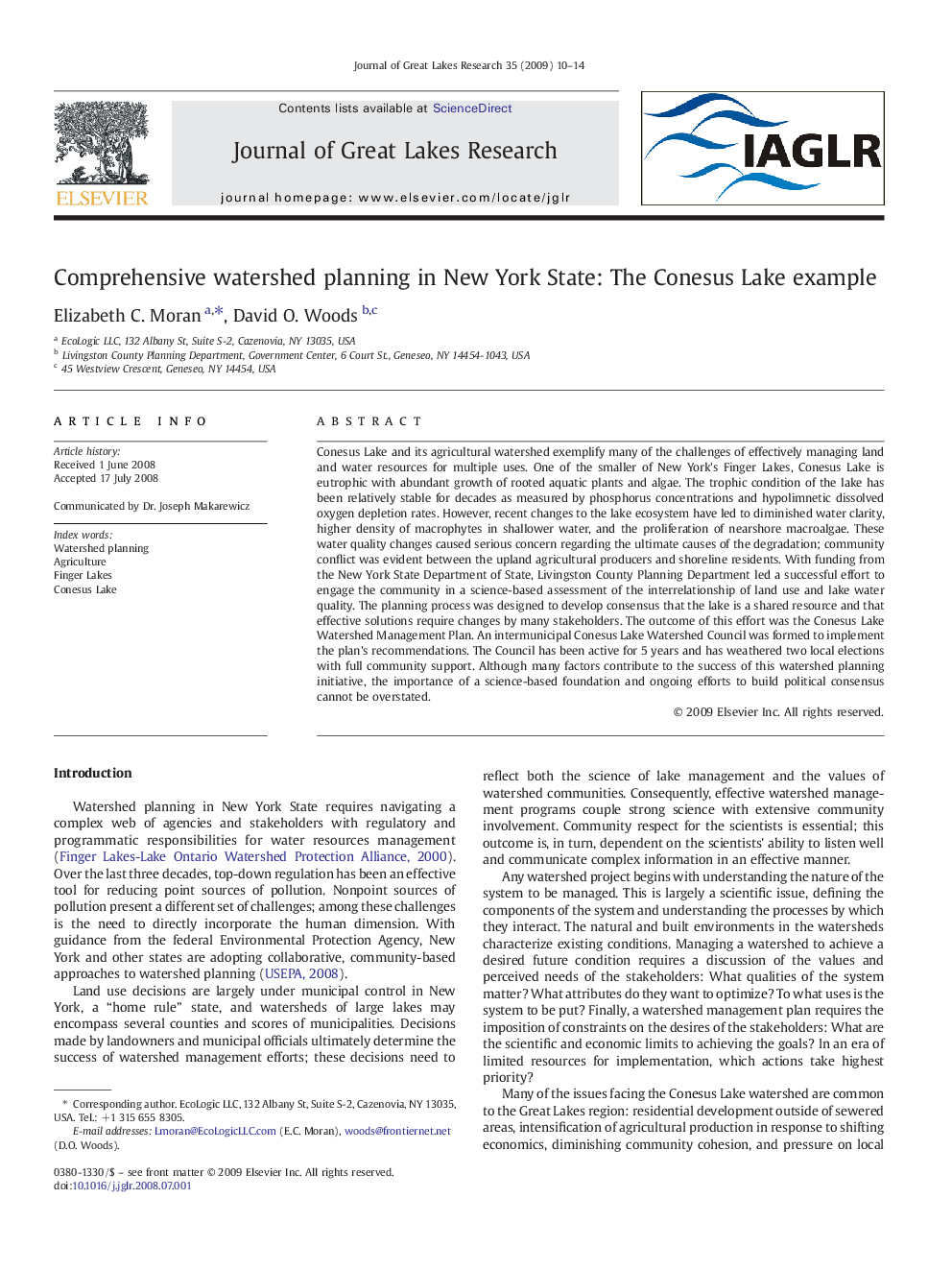| Article ID | Journal | Published Year | Pages | File Type |
|---|---|---|---|---|
| 4399173 | Journal of Great Lakes Research | 2009 | 5 Pages |
Abstract
Conesus Lake and its agricultural watershed exemplify many of the challenges of effectively managing land and water resources for multiple uses. One of the smaller of New York's Finger Lakes, Conesus Lake is eutrophic with abundant growth of rooted aquatic plants and algae. The trophic condition of the lake has been relatively stable for decades as measured by phosphorus concentrations and hypolimnetic dissolved oxygen depletion rates. However, recent changes to the lake ecosystem have led to diminished water clarity, higher density of macrophytes in shallower water, and the proliferation of nearshore macroalgae. These water quality changes caused serious concern regarding the ultimate causes of the degradation; community conflict was evident between the upland agricultural producers and shoreline residents. With funding from the New York State Department of State, Livingston County Planning Department led a successful effort to engage the community in a science-based assessment of the interrelationship of land use and lake water quality. The planning process was designed to develop consensus that the lake is a shared resource and that effective solutions require changes by many stakeholders. The outcome of this effort was the Conesus Lake Watershed Management Plan. An intermunicipal Conesus Lake Watershed Council was formed to implement the plan's recommendations. The Council has been active for 5Â years and has weathered two local elections with full community support. Although many factors contribute to the success of this watershed planning initiative, the importance of a science-based foundation and ongoing efforts to build political consensus cannot be overstated.
Related Topics
Physical Sciences and Engineering
Earth and Planetary Sciences
Earth and Planetary Sciences (General)
Authors
Elizabeth C. Moran, David O. Woods,
